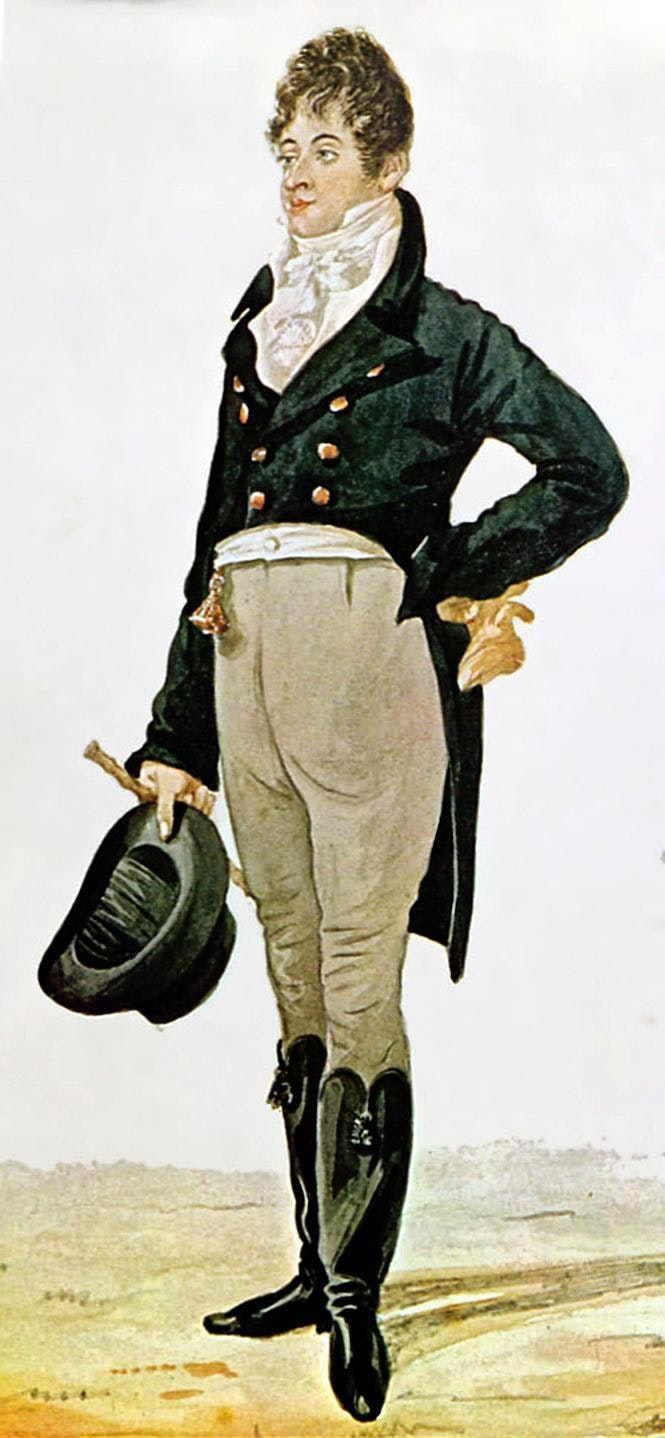This article is taken from the March 2025 issue of The Critic. To get the full magazine why not subscribe? Right now we’re offering five issues for just £10.
Despite the drab dress of our demotic age, in which even Members of Parliament believe that bin liners and bean bags are best to drape across those green benches, the elegant hand of that old Regency rip, Beau Brummell, still reaches down to us across centuries, reminding us that whilst some clothes cost money, effort is free.
Brummell’s own efforts are the stuff of legend. One morning a friend called at his house in Chesterfield Street. The visitor was ushered inside but asked to wait for the master was unready to receive visitors. So he waited … and waited.
After a time and being tired of waiting, he made his own way up to Brummell’s room. There he found the great man coated and pantalooned but not quite girded to greet the world for his neck was still undressed. Across the tables, the chairs and even the floor were strewn the detritus of Brummell’s wardrobe routine. Every colour and kind of silk cravat and fancy satin fallal lay discarded as their owner tried another, then another. Brummell’s valet, busily confecting the latest creation beneath his master’s chin, caught the eye of the visitor. Gesturing at the cast off articles around him, the valet cried plaintively, “These, sir, are our failures.”

Brummell was not merely a dandy. He was a determined perfectionist. It was this attention to detail that ensured his “look” lived on long after his death, and a century later he was still the mannequin upon which every gentleman was expected to model.
Brummell was particularly rigorous about his neckwear. The cravat, invented by Croat mercenaries as the tour de cou before being co-opted by the fashion-conscious French as a stylish stock, metamorphosised into the modern necktie around 1850. And until Goldman Sachs and other Wall Street outfits decided that outfitting was outré and dressing down the antidote to Gordon Gecko, the tie was a fixture around every male throat.
Of course, for New York bankers and brokers, Brooks Bros supplied the ties of choice. Reverse stripes (American stripes run diagonally from right down to left) adorned every preppy college and racket club bar. The European preoccupation with asymmetrical designs never really caught on, despite the best efforts of Amos Sulka, the brand beloved of proto-Bond Gregory Sallust. Sadly, Sulka is no longer with us, but eventually even the Americans discovered the vivid shades and wild patterns of Hermès and Ferragamo.
Hermès has always been a favourite maker of mine. My lucky tie is from Hermès, a vibrant tangerine decorated with silver dolphins, though I have not worn it much of late. When Ed Miliband won the Labour leadership in 2010, I celebrated in the Hermès store on Bond Street. “That’s my re-election sorted,” I said to myself as I bought myself a gift.
Since then, I have acquired another half dozen. Hermès ties may be immodestly priced, but they are beautiful, created by Europe’s finest modélistes, and anyone who knows anything about sartorial accoutring can spot one on a shirt at 20 yards.
Parisian style is difficult to beat, but the Italians in the shape of Salvatore Ferragamo, give them a run for their Euros. Ferragamo began as a cobbler in the 1920s and quickly established a reputation for high-end luxury. A hundred years on, the firm is still run by the family and still selling fantastic neckwear. They, too, are not cheap but your change from Ferragamo compared to the Hermès shop is probably enough to pay your subscription to The Critic.
But we must keep the British end up. New & Lingwood do their bit to keep the flag flying with a fine selection of heavily woven traditionally English silks, including a nice line in grenadine. Aquascutum (“waterproof” in Latin) are still quite good, if no longer quite British. But if anyone suggests you buy an imported tie from Saks, I advise a snappy reply: “Get knotted.”







